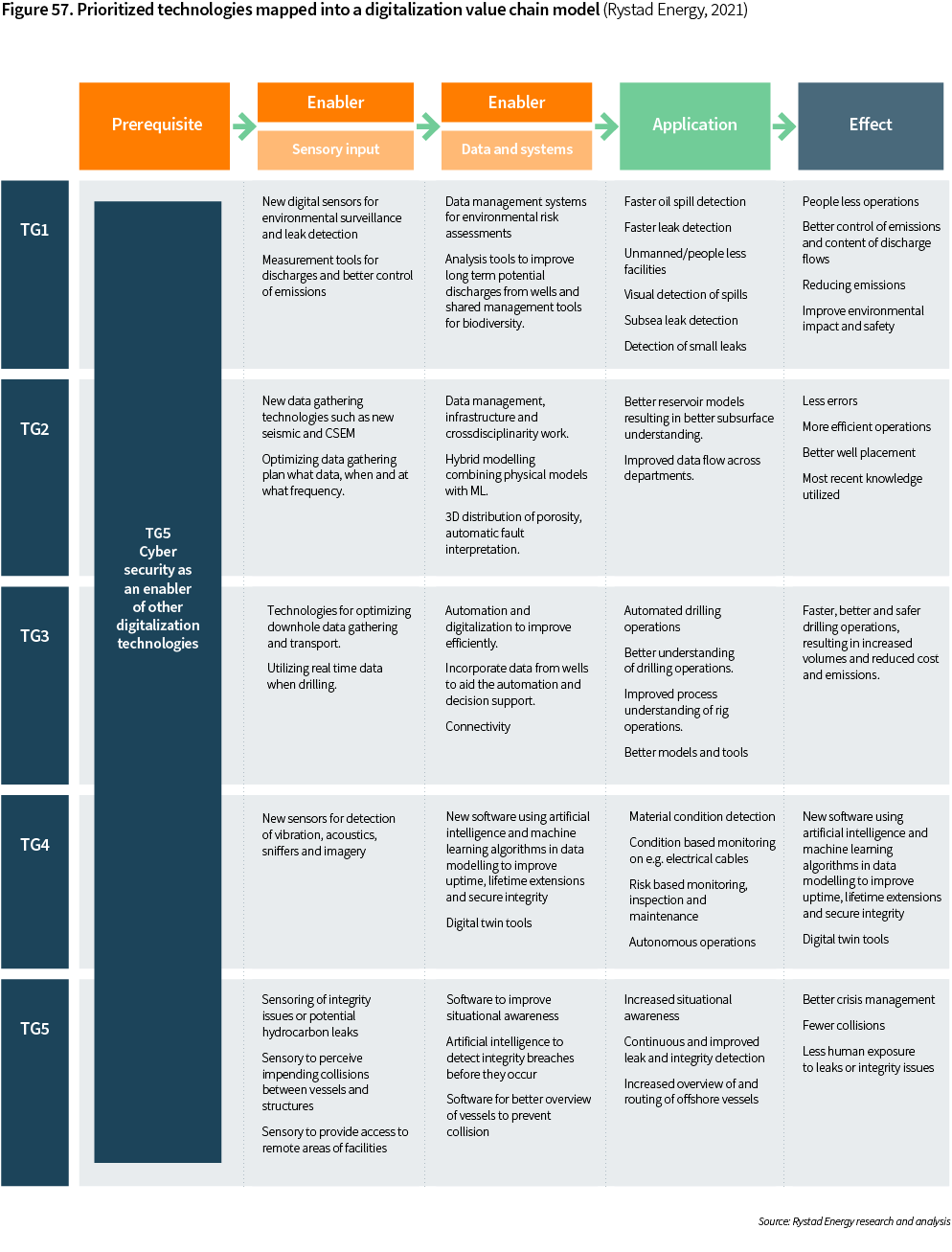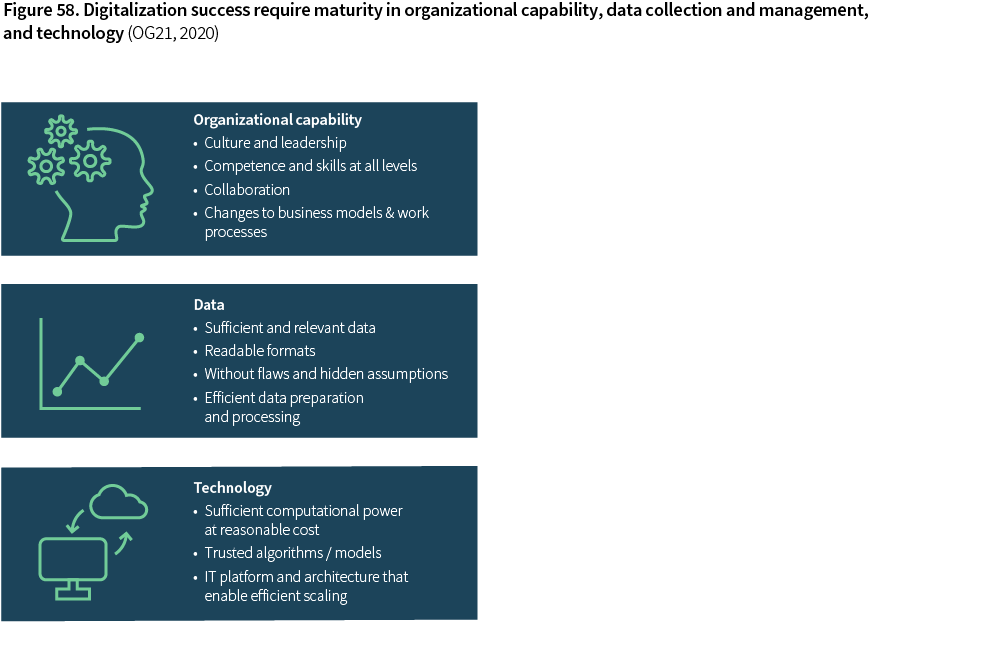OG21 Strategy - A New Chapter
Publisert 6. nov. 2021
Digitalization and efficient data utilization
Most of the technology areas prioritized by the TGs and discussed in Section 4, include some elements of digitalization. Some examples from the TG priority tables are presented in Figure 57, categorized into a model where cyber security is a prerequisite, data collection and data management systems are considered enablers, and the specific physical or data analytics tools are called applications (Rystad Energy, 2021).

The digital transformation that the NCS needs to take part in, include tools and solutions such as AI in combination with physical models, robotics, drones and automation, remote operations, unmanned installations, and advanced digital twins. The transformation is enabled by technological advancements such as computational power and improved algorithms and models. But improved technology that can efficiently process data and provide quality decision support is not enough. Successful digitalization delivering added value, also require organizational capability, access to quality data, systems for efficient data management, and new technology.
Challenges and opportunities with digitalization identified in this OG21 strategy revision align well with the challenges and opportunities discussed by OG21 in recent study on machine learning (OG21, 2020).

Gathering and processing the right data is often a cumbersome and time-consuming task. Data might not be on the right format, it may be locked into applications, it might not be known to the user because it sits in other departments, or it may need to be manually checked for flaws. High data quality is fundamental for creating trust in data and therefore for realizing full digitalization and autonomous systems. Systems and sensors that can correct for data errors is an important part of providing high quality data, but high-quality data is also dependent upon safe and efficient data transfer. The full data value chain must be considered to build trust, starting from sensors, through data transfer, communication and storage, all the way to and including the use of data in applications.
In an industry where the amounts of data are growing exponentially, it will be important to develop technology, systems and work processes that enable efficient data gathering and processing as well as efficient data sharing between parties.
There are many examples of good collaboration on data gathering and exchange in the petroleum industry. The "Subsea Wireless Group" (SWiG) is an example of an international industry collaboration on data gathering and transfer, where one of the objectives is to promote interoperability for subsea wireless communications.
Another example is "DISKOS", an industry database for the NCS with seismic data, well data and production data. "Digitalt grunnfjell" is a third example where information on drill cuttings from 1500 NCS wells is digitized and made available for analyses. With the many collaboration initiatives going on and the considerable opportunity for more collaboration going forward, the oil companies on the NCS have come together in a digital collaboration initiative, managed by the Norwegian oil and gas association, with the purpose of coordinating such initiatives to the best for the whole industry.
Recommendation: The industry should collaborate on developing procedures and standards that enable data interoperability and efficient data sharing.
Meldinger ved utskriftstidspunkt 4. juli 2025, kl. 04.44 CEST